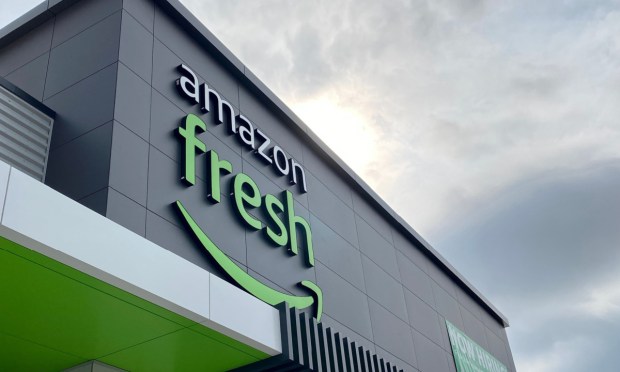Amazon Looks to Top Last Year’s Prime Day Grocery Gains

As Amazon looks to drive adoption of its grocery offerings, the eCommerce giant is heeding the learnings from last year’s Prime Day’s growth in the category, doubling down on food and beverage deals.
The eCommerce giant announced Thursday (July 6) many of the upcoming deals for this year’s sales event, which will run Tuesday and Wednesday (July 11 and 12). Included in these offers are several grocery offers through the company’s Amazon Fresh arm — 20% off in-store purchases leading up to the event, 30% on early Prime Day deals across eCommerce and brick-and-mortar channels, and $20 off purchases of $100 or more online during the event.
These offers mark an increase in grocery-specific deals from what was announced last year — 20% off “select everyday essentials” from U.S. Amazon Fresh stores — and they come on the heels of the company seeing an uptick in Prime Day food and beverage purchases following this grocery-specific offers.
Specifically, PYMNTS’ study last year, “Prime Day 2022: Inflation Hits, But Amazon Still Wins,” which drew from a survey of a census-balanced panel of more than 2,100 Amazon Prime members about their Prime Day spending, revealed that nearly 1 in 4 Prime Day participants (23.1%) purchased groceries. This share was up from 20.5% the year prior.
These latest deals come as Amazon looks to boost its grocery penetration in an effort to gain on competitor Walmart. PYMNTS research found that, at the close of last year, the latter held am estimated 17.8% share of food and beverage sales, while Amazon held 2.6%, such that the Walmart’s share exceeds Amazon’s by nearly a factor of seven.
Yet Amazon is making gains, while Walmart is not. The same dataset showed Walmart’s share of the category had slipped from 18.4% in early 2019, while Amazon’s had grown from 1.9%.
Much of these gains come from Amazon’s efforts in shelf-stable categories, while the eCommerce giant has struggled to penetrate perishable food categories to the same degree Most consumers shop for these end-aisle items in stores, and Amazon has failed to see the growth it was hoping for with its mass-market Amazon Fresh brick-and-mortar stores.
“Amazon has built a somewhat unusual, but significant grocery business over nearly 20 years,” Amazon President and CEO Andy Jassy wrote in a letter to shareholders earlier this year. “Similar to how other mass merchants entered the grocery space in the 1980s, we began by adding products typically found in supermarket aisles that don’t require temperature control.”
Yet Jassy noted on a call with analysts in the spring that the company’s mass-market brick-and-mortar Amazon Fresh grocery brand may be soon replaced with a new concept in the same category.
“We wish we were further along [in mass-market brick-and-mortar grocery] at this point,” he said. “We’ve tried lots of ideas. We haven’t yet found conviction around the format that we want to go expand much more broadly.”
Still, Amazon stands to benefit from consumers’ increasing adoption of eCommerce grocery options. Data from PYMNTS’ study “Tracking the Digital Payments Takeover: Catching the Coming eCommerce Wave,” created in collaboration with Amazon Web Services (AWS), which drew from an April survey of nearly 2,700 U.S. consumers, revealed that 32% of shoppers say they are very or extremely likely to increase their online grocery purchases in the next year.

